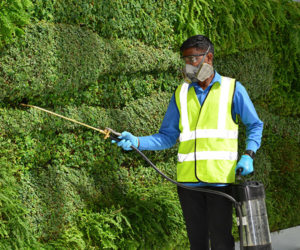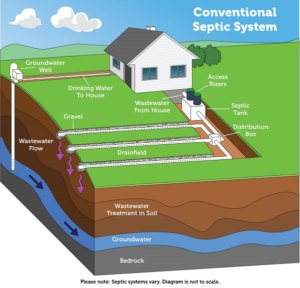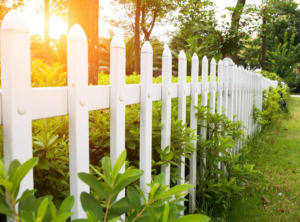The military is not known for moving quickly, but it eventually got around to modernizing the Humvee. It added a lot of armor, guns, and turrets.
The result was an instantly recognizable vehicle. It is still in use today and continues to serve the Army. We at GovPlanet frequently get questions about the HMMWV and the Humvee. Click https://www.streetlegalexports.com/ to learn more.

The Humvee is a four-wheel drive military light tactical vehicle that can be configured in three ways: weapon carrier, utility vehicle, and field ambulance. With its unique stance and wide wheelbase, the Humvee is extremely versatile and can operate across many terrains. It can also be equipped with various weaponry, from mounted machine guns to wire command-guided antitank missiles. Its clever pop-up gun turret, ballistic-resistant armor and ballistic shielding give it much more protection than the exposed jeeps it replaced.
The original version of the Humvee (known as the HMMWV) was developed for the US Army after it realized that its small jeeps were becoming increasingly vulnerable to roadside bombs and enemy fire. Insurgents were able to fire their 7.62 mm bullets at will and crews were forced to use plywood, sandbags and cannibalised civilian vehicles to protect themselves.
In response, the Army commissioned AM General to produce a new design that could be quickly converted into the different configurations it required. It was designed to be rugged, reliable and easy to maintain. The Humvee was a great success, and it quickly became the standard light tactical vehicle for the military worldwide.
As a result, you’ll find them in armies around the world, from the United States and Japan to South Korea, Israel and Australia. They’re used as a troop transport, to haul cargo and to conduct front-line reconnaissance patrols. They can be modified to carry up to eight people (or two or three plus a driver) and are easily loaded in a C-130 Hercules airlift aircraft and 15 in a Lockheed C-5A Galaxy.
Despite being a good vehicle, the Humvee’s time is likely coming to an end. It has been overtaken by a new design called the Joint Light Tactical Vehicle, which is lighter, more agile and better protected. In fact, the military has started to replace their existing fleet of Humvees with JLTVs already. In 2021, Forbes reported that the 1st Armored Brigade Combat Team had begun to receive their first batch of JLTVs. However, it may take some time for the entire Army to get their hands on the new vehicle.
The HMMWV
The HMMWV is the Army’s and Marine Corps’ primary light utility vehicle. It serves as a replacement for the older M151 ‘Wilys’ Jeep and was designed to carry both troops and cargo. The HMMWV is also capable of carrying various weapon systems and other equipment, making it a one-stop shop for both transport and firepower.
The base model HMMWV looks like a small pickup truck with two doors and a soft roof over the driver’s cab. It is equipped with a basic weapons mount which can either be loaded with a.50 cal/12.7 mm heavy machine gun or a 7.62 mm medium machine gun (with a gunshield). It can also be fitted with a TOW carrier which can fire wire-guided anti-tank missiles at ground vehicles.
Aside from the armament variants, there are a number of other configurations to choose from. Some are specialised, such as the ambulance which can carry up to four patients and a medical crew. The specialised turret vehicle, a ‘command and control vehicle’, is another addition which can house three crewmembers in the front seat and two more behind the wheel. There are also a number of specialised cargo versions which can be used for hauling different loads, from ice cream to pallets.
HMMWVs are far more versatile than the UAZ-469 and offer much better protection against small arms fire. They are also faster than their Russian-made counterparts, though they lack the turning capabilities of jeeps and the stability of Land Rover-sized vehicles.
The HMMWV is an excellent vehicle for a wide variety of missions in ArmA 2. As an unarmed utility, it can carry up to eight passengers and is relatively fast and agile for a large vehicle. There are also a number of armed variants which are useful for fighting on the battlefield. Despite their good armour, however, none of the HMMWVs can actually carry more than six passengers (aside from the SOV and Ambulance variants). The ‘CROWS’ added in the Operation Arrowhead expansion pack are depicted with highly implausible configurations since the turrets they use could not support the weight of such a large HMMWV.
The 4-CT
The 4-CT Card is the nation’s first direct-aid program to rapidly deliver funds and resources to disadvantaged Connecticut residents during the COVID-19 pandemic. 4-CT Cards have helped to distribute funds, health care and other vital resources to those most in need since the start of the pandemic.
Siemens SOMATOM Definition AS combines the flexibility of single-source CT with a broad range of dedicated clinical applications – all designed for efficiency to match your imaging needs. Whether you are tackling routine, cardiac, trauma, ER or bariatric scanning, our innovative technologies such as HiDynamics and Stellar help to provide greater signal-to-noise ratio and improved low contrast detectability.
The International Models
The HMMWV is used by many international military organizations. These nations often use the truck for surveillance, reconnaissance, escort and police missions. Some of the more heavily modified versions of this vehicle can carry up to 11 crew members and include manually or remotely operated weapons turrets. The HMMWV also features double A-arm independent front and rear suspensions with hydraulic shock absorbers, which make it a great choice for off-road terrain. The trucks also have open differentials that can distribute torque if one of the wheels loses traction, making it more reliable in challenging situations.
While the United States may eventually replace some of its aging HMMWVs with the new Joint Light Tactical Vehicle, it will continue to send these vehicles to allies around the world for quite some time. The military plans on converting the vehicles to use electric motors, which will help them save fuel and reduce emissions.
Some countries, such as Israel and Ukraine, have begun to build their own HMMWVs to save money on repairs and maintenance costs. The Direccion General de Industria Militar (DGIM) in Mexico has built a few variants of this truck, including the 2-CT model that can be modified to meet different mission sets. This two-man vehicle is equipped with armored windows and a layer of protection unique to these Mexican trucks.
Other versions of the HMMWV have been built for special operations forces and other government agencies. For example, the Iraqi Counter Terrorism Service uses all-black vehicles, while the Iraqi Federal Police use versions painted in a bright blue-and-white camouflage pattern. This allows them to blend in better against the Islamic State’s militant fighters.
The HMMWV is still an effective, rugged and versatile military vehicle that continues to serve its purpose well in today’s world. As technology improves, the HMMWV will continue to play a key role in military operations and will likely remain a mainstay for years to come.




